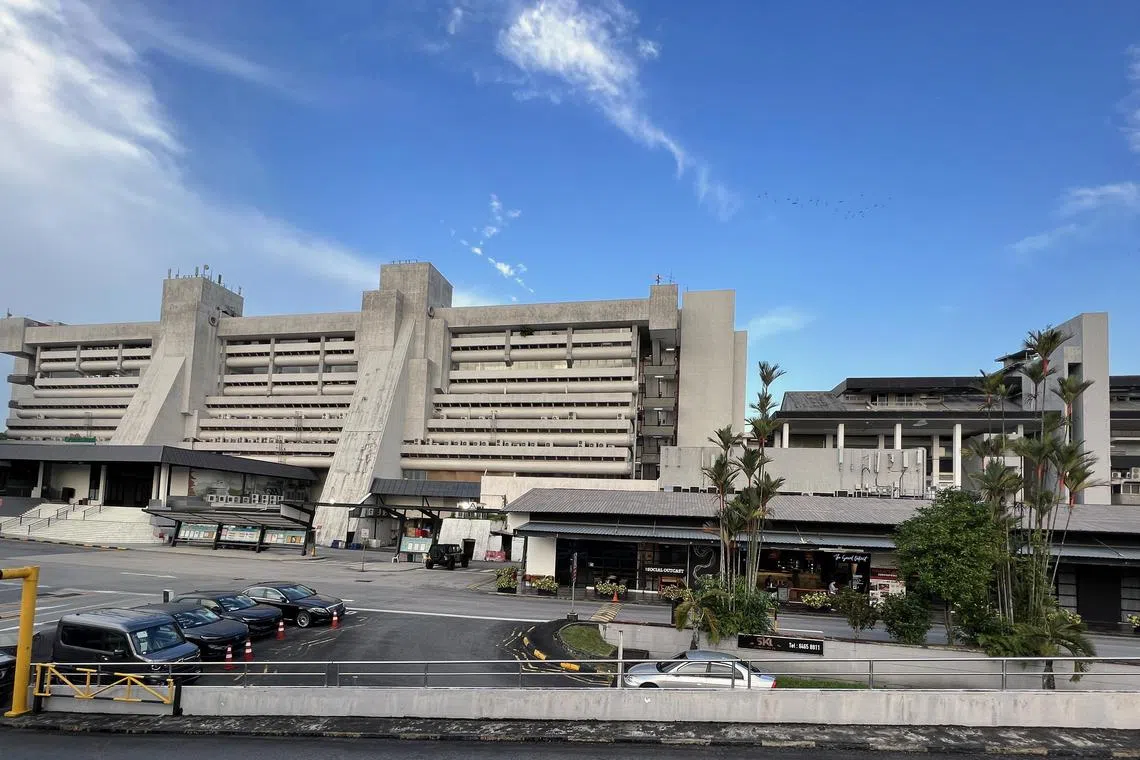27 Turf City heritage structures could be kept, most of two forested areas to be retained
Sign up now: Get ST's newsletters delivered to your inbox

Bukit Timah Turf City's South Grandstand (left) and North Grandstand (right), as well as the area in front of the stands, which will be retained as a central open space in the upcoming estate.
ST FILE PHOTO
Follow topic:
SINGAPORE – One building has stood the test of time, surviving World War II in the 1940s and hosting Queen Elizabeth II in 1972.
The other is an icon of post-independence architecture in Singapore, its striking cantilevered roof the largest of its kind in the country.
Once holding up to 60,000 spectators in total, the 1933-built South Grandstand and the 1981-built North Grandstand – which stand in stark contrast beside each other at the former Bukit Timah Turf City – could together be the centrepiece of a neighbourhood in a future housing estate at the old racecourse.
On May 23, National Development Minister Desmond Lee announced at the launch of an exhibition featuring plans for the Bukit Timah Turf City estate that the authorities will study retaining and adaptively reusing 27 heritage buildings and structures grouped in five clusters on the site – including the two grandstands.
The study follows a heritage impact assessment (HIA) that was carried out as part of planning processes for the site. An environmental impact assessment (EIA) was also conducted.
The studies were done so that the site can be redeveloped sensitively, said Mr Lee, adding that most of two forested areas near the former racecourse – Bukit Tinggi and Eng Neo Avenue Forest – will be retained.
The HIA, conducted by the National University of Singapore’s Department of Architecture and heritage consultant Purcell, found the two grandstands to be of exceptional significance, indicating that they each make a major contribution to the overall significance of the former racecourse.
The HIA report said the North Grandstand was the central attraction during race days, and stands as a physical and visual landmark of the Bukit Timah Racecourse – the base of the Singapore Turf Club’s operations until it moved in 1999.
As for the South Grandstand, the report said it marked “the first substantial investment in the site after the topographical and landscaping that was necessary to form the racetrack”, adding that it hosted several large-scale events such as the International Orchid Festival Show in 1963.

The rear view of the North Grandstand (left) and the South Grandstand (right).
PHOTO: ST FILE
The announcement that the South Grandstand is among the buildings to be studied for retention indicates that it could yet get a new lease of life.
The HIA report – published for public feedback on May 23 – said the authorities had originally planned to demolish the structure entirely, to make way for new residential development.
Other buildings that the HIA found to be of heritage significance include the Bukit Timah Saddle Club Clubhouse, Secretary’s and Assistant Secretary’s Bungalows, and Fairways Quarters, said the Urban Redevelopment Authority (URA).
The agency said the racecourse’s structures were assessed based on a combination of historical, social, aesthetic, architectural and contextual values.
Besides studying the retention of buildings, the authorities will also develop a new central open space in front of the grandstands that will “pay homage to the site’s sporting heritage”, said URA.
This new space, with an oval shape that references the geometry of the site’s old racetracks, will be about twice the size of the Padang, an open field of about 4.3ha in the Civic District.
The former Turf Club site’s heritage will be documented, with the authorities exploring ways to expose more people to its history.
Infrastructure consulting firm Aecom conducted the EIA, which recorded 646 plant species and 407 fauna species across a 193ha site.
Of these, 177 plant species and 25 animal species were of conservation significance, many in Eng Neo Avenue Forest and Bukit Tinggi.
Species that were spotted included the globally threatened straw-headed bulbul and Sunda pangolin.
URA said that in line with the EIA’s recommendations, the authorities will “retain most of Eng Neo Avenue Forest and Bukit Tinggi, and study how they can be integrated into our future park network”.
It added that a new 100m-wide “lushly planted” ecological connection will be established between Eng Neo Avenue Forest and Bukit Tinggi to link the two habitats and ease the movement of species between the two forest patches.
The connection will be about 400m long.
URA said that in addition to this connection, strategies to improve ecological connectivity between the two retained forested areas, the Central Catchment Nature Reserve and Rifle Range Nature Park may be studied further and implemented where feasible.
The EIA recommended installing connectivity structures such as poles for colugos and culverts to facilitate fauna movement across Eng Neo Avenue and within the 100m-wide corridor.

A panel at the exhibition, held at the URA Centre, said that representatives from nature groups assisted the environmental study’s consultants to identify areas where colugo connectivity could be improved.
These efforts could result in colugo poles – man-made poles that act as “trees”, which colugos glide to and from in the wild – being installed within and near the upcoming estate.
Mr Lee said that in all, about one-third of the Bukit Timah Turf City estate will be set aside for green spaces such as parks, open spaces and natural greenery.
URA said these will include selected landscapes of the former Turf Club, such as the Fairways Quarters courtyard, which will be adapted and improved to serve as a green recreational space.


